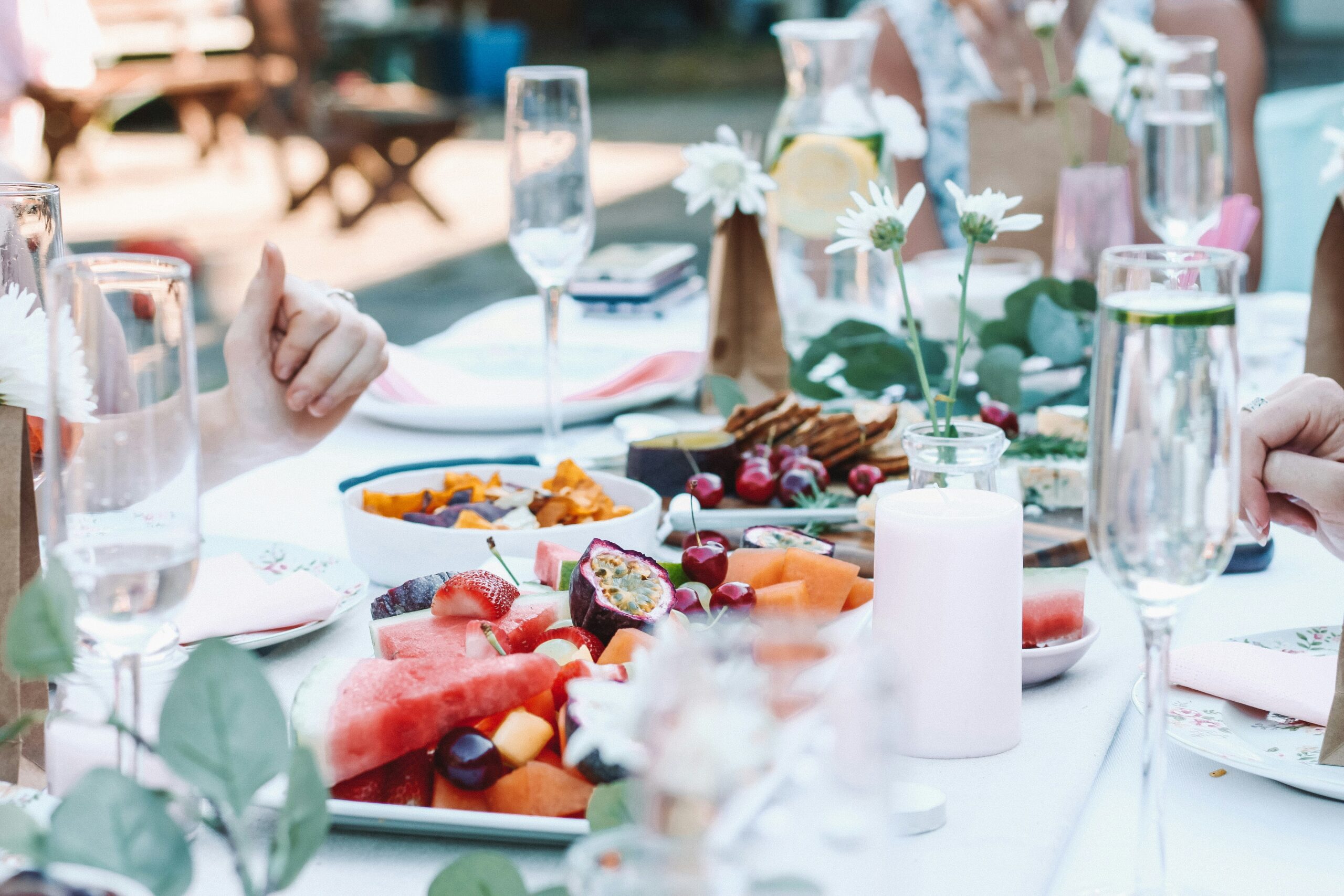Traditional holiday meals are passed down from generation to generation, but while recipes might maintain the ingredients, sometimes the purpose behind those traditions is lost in the shuffle.
We wanted to know the “why” behind the plates we prepare each Easter. How can you turn your wining and dining during Holy Week back toward Christ and the meaning of the Easter season while also choosing sustainably sourced products and produce?
Use this guide below to shed inspiration and light on your abundant Easter table.
Lamb
“Look, the Lamb of God, who takes away the sin of the world!”
John 1:29 NIV
In the Christian tradition, Jesus is the sacrificial lamb, an image that harkens back to the days of Abraham, when God provided a lamb as an offering in the place of his son, Isaac. Later, when the Hebrews were still in Egypt, God told Moses to use the blood of a lamb on the cross beams of the front doors of their homes in order to avoid the angel of death, sparing their firstborn.
Jesus is the lamb of God—the sacrificial lamb that saves our lives—who ushers in the resurrection life on Easter morning. We have lamb on Easter to remember that sacrifice and celebrate Jesus, the firstfruit of the New Creation.
The best place to begin your search for local lamb is at your local farmers market. After that, several different search engines online can help you find local farmers. Try Eat Wild, Ground Work Collective, or the Organic Consumers Association’s regenerative farm map so that you can find farmers in your region that are working toward a regenerative future.
If you still can’t find a local farmer to buy lamb from directly, ask your local butcher shop where they source their lamb from, or look for the Superior Farms branding in larger chain grocers. Superior Farms is an employee owned company that works with over 1,000 family farms throughout the United States who graze their lambs on pastures. Many of the farmers they partner with engage in regenerative grazing, a practice of partnering with other crop farmers to bring their sheep onto fields after crops have been harvested.
Eggs
One of my family’s favorite Easter dishes is the plate of deviled eggs. They do not last long on that platter shaped expressly for this purpose, used once a year (or maybe more, if you are like us and can’t pass up an opportunity to make them).
Eggs are a widely recognized symbol of fertility, rebirth, and new life across many different cultures and religions. If an Easter egg hunt is in your family’s catalog of traditions, you’re in luck! A son in the Bible asked for an egg as a gift:
“Which of you fathers, if your son asks for a fish, will give him a snake instead? Or if he asks for an egg, will give him a scorpion? If you then, though you are evil, know how to give good gifts to your children, how much more will your Father in heaven give the Holy Spirit to those who ask him!
Luke 11:11-13 NIV
Eggs and Easter egg hunts are a celebration of the abundant life God gives us through the Holy Spirit.
Local Hens connects consumers to local farmers for specific types of produce in your region. Just check the box for eggs, and you’ll hatch some results! (ha ha ha)
Easter Bread
If there ever was a spiritual food, bread is one.
“Then Jesus declared, ‘I am the bread of life. Whoever comes to me will never go hungry, and whoever believes in me will never be thirsty’”
John 6:35 NIV
There are several different kinds of Easter bread, but the basic premise is the same: Christians celebrate the good news of the Lord’s resurrection with the extravagant joy of a sweet, enriched bread. Whether you’re making Italian Pane di Pasqua, Greek Tsoureki, Polish Babka Wilkanocna, Russian Kulich, our Americanized Easter bread, or some other variation, you’ll find a lot of similarities stretching across the cultural traditions.
Easter bread is a sweet bread that is usually decorated, with colored sprinkles, dyed eggs, icing, fruits, seeds, or nuts, and it often incorporates a variety of spices and aromatic flavors, like citrus zest, anise, chocolate, or cinnamon.
To honor creation when it comes to Easter bread, you can bake at home using locally sourced and bulk ingredients, which also allows you to avoid excess packaging and reduce the environmental impact associated with commercial food production and distribution. In keeping with my family’s heritage, I really, really want to bake Babka Wilkanocna this Easter! Anyone else up for the challenge? Let’s have a cultural Easter bread bakeoff!
If putting a bun in the oven isn’t really your thing, ask around your community to find out about local bakers who share your values—you can support the local economy, eat delicious breads, and feel good about it while you’re at your Easter celebration!
Bitter Herbs
While the Jewish celebration of Passover doesn’t overlap with the Christian calendar this year, many Christians remember the Passover meal during Holy Week because Jesus’ last supper was a Passover meal. In the Jewish Passover, bitter herbs symbolize the bitterness of slavery in Egypt. For Christians, bitter herbs symbolize the bitterness of the crucifixion.
You can incorporate a dish that uses bitter herbs in your Easter meal. Horseradish sauce gives a powerful kick and delicious accompaniment flavor to your roasted lamb. You could also try an endive salad, radish salad, or dandelion greens salad.
You can grow your own herbs (maybe not for this Easter… but next year!) in a garden, balcony, or even a windowsill, which is a super sustainable way to access fresh herbs.
Depending on your region and local regulations, you might be able to forage for local, wild bitter herbs as well—even in your own backyard. Our Heritage of Health offers tips on foraging in your yard. I know for a fact that we have dandelions in our yard, so that might be the best place for me to start.
And don’t overlook the power of your community. There’s probably a local plant and gardening group online you can join, or just form one with your friends, families, and neighbors! You grow cilantro, I’ll grow radicchio, let’s all make a salad!
Fish
In one of Jesus’ most celebrated miracles, he multiplies a couple of fish and several loaves to feed thousands of people. It was such a big deal that all four gospel writers talked about it. Not only that, Jesus also ate a piece of broiled fish to prove that he wasn’t a ghost after he was resurrected (Luke 24:41-43 NIV).
To remember both the miracle of Jesus’ abundant love and extravagant generosity, many Christian traditions incorporate fish into their meal on Easter Sunday.
Besides catching your own fish, you can find local, sustainable fisheries that incorporate the kinds of practices that honor God’s creation.
Looking for more food for thought? Check out “Sustainable Lenten Meal Planning” for sustainable diet recommendations during Lent and all year round.





 Copyright
2024
Root and Vine
Copyright
2024
Root and Vine